
Still life painting in the west appeared as early as 3,500 years ago in Egypt. Images of mundane objects useful in a good afterlife adorn murals of daily life in Egyptian frescoes and tomb paintings. They were commonly interwoven with images of workers, kings and gods, rather than being individual paintings. Compositionally, these arrangements, and their often symbolic and narrative qualities, were a subset of larger images that also had symbolic and narrative qualities.
In the classical periods of ancient Greece and Rome, still life paintings achieved a vibrant level of naturalism and enjoyment for their own sake. Woven into household frescoes in wealthy Pompeian homes, still life paintings provided visual delight to the residents as they included food, books, flowers, gardens and animals. Symbolic objects were also part of figurative images of the gods and goddesses, read as part of the visual story unfolding on fresco walls.
Medieval painting and book illumination traditions in Europe elevated the role of still-life objects to new heights of symbolic narrative, not unlike that of ancient Egypt. Chalices, swords, objects of torture, flowers and more identified everything from stories of individual saints to spiritual and theological concepts.
The parallel traditions of still life compositions as sources of beauty as well as symbolic narrative have continued to the 21st century. In fact, they have been a vehicle for visual narrative and expression in almost every historical and artistic movement in western art. Everything from Impressionism to early modern Abstraction utilised still life subjects as a vehicle for exploration.
Denne historien er fra March 2021-utgaven av Artists & Illustrators.
Start din 7-dagers gratis prøveperiode på Magzter GOLD for å få tilgang til tusenvis av utvalgte premiumhistorier og 9000+ magasiner og aviser.
Allerede abonnent ? Logg på
Denne historien er fra March 2021-utgaven av Artists & Illustrators.
Start din 7-dagers gratis prøveperiode på Magzter GOLD for å få tilgang til tusenvis av utvalgte premiumhistorier og 9000+ magasiner og aviser.
Allerede abonnent? Logg på

Still life IN 3 HOURS
Former BP Portrait Award runner-up FELICIA FORTE guides you through a simple, structured approach to painting alla prima that tackles dark, average and light colours in turn
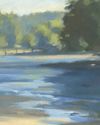
Movement in composition
Through an analysis of three masterworks, landscape painter and noted author MITCHELL ALBALA shows how you can animate landscape composition with movement
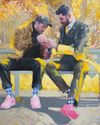
Shane Berkery
The Irish-Japanese artist talks to REBECCA BRADBURY about the innovative concepts and original colour combinations he brings to his figurative oil paintings from his Dublin garden studio

The Working Artist
Something old, something new... Our columnist LAURA BOSWELL has expert advice for balancing fresh ideas with completing half-finished work
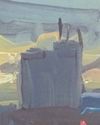
Washes AND GLAZES
Art Academy’s ROB PEPPER introduces an in-depth guide to incorporating various techniques into your next masterpiece. Artwork by STAN MILLER, CHRIS ROBINSON and MICHELE ILLING

Hands
LAURA SMITH continues her new four-part series, which encourages you to draw elements of old master paintings, and this month’s focus is on capturing hands

Vincent van Gogh
To celebrate The Courtauld’s forthcoming landmark display of the troubled Dutch master’s self-portraits, STEVE PILL looks at the stories behind 10 of the most dramatic works on display
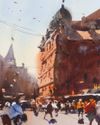
BRING THE drama
Join international watercolour maestro ALVARO CASTAGNET in London’s West End to paint a dramatic street scene
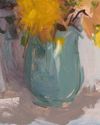
Serena Rowe
The Scottish painter tells STEVE PILL why time is precious, why emotional responses to colour are useful, and how she finds focus every day with the help of her studio wall

Bill Jacklin
Chatting over Zoom as he recovers from appendicitis, the Royal Academician tells STEVE PILL about classic scrapes in New York and his recent experiments with illustration